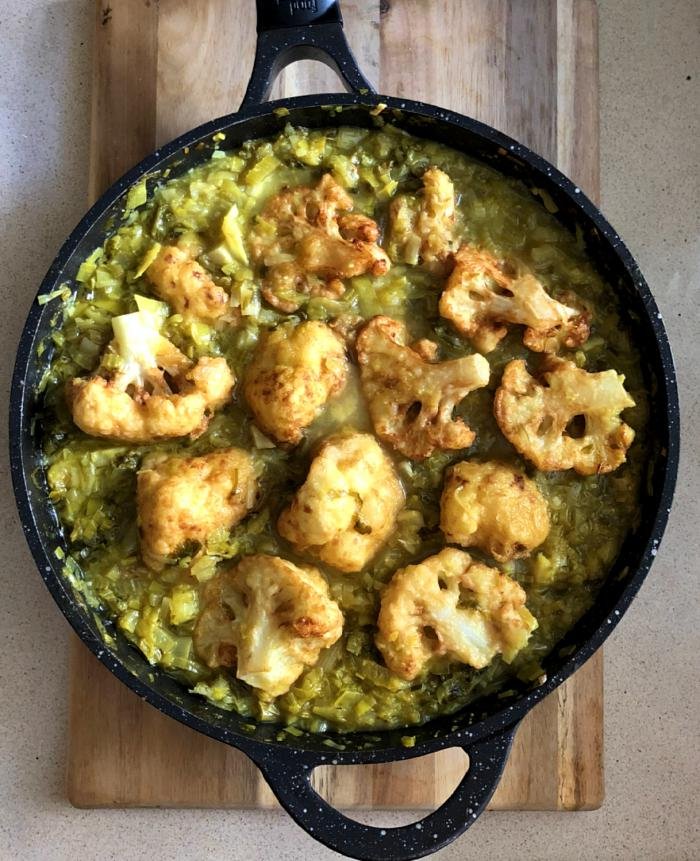One of the questions people ask me a lot since my book, Cauliflower, was published, is: can you see or cook with cauliflower anymore?
Well, even though I wrote over 70 recipes just for the white queen, my curiosity and thirst to develop new ways to use it have never ceased.
So today I am happy to present to you with an original brand-new recipe that glorifies cauliflower yet again: braised cauliflower in hamoosta sauce.
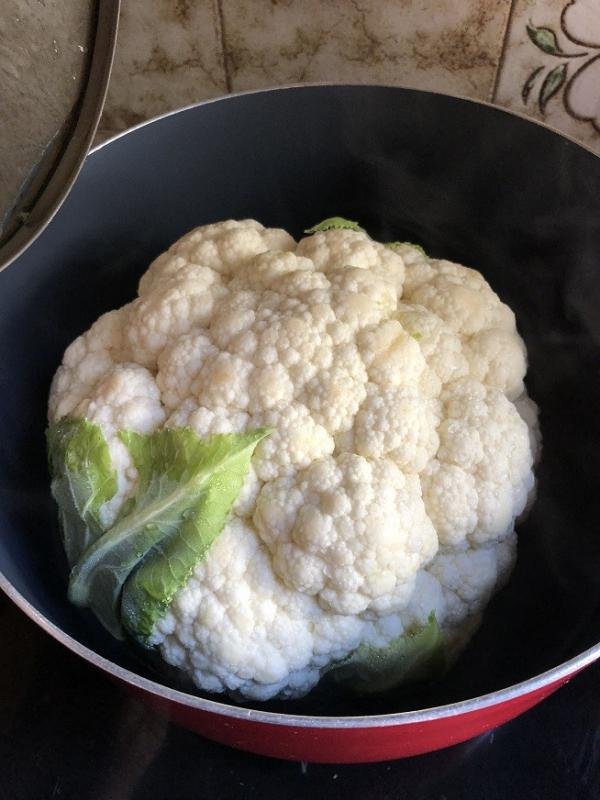
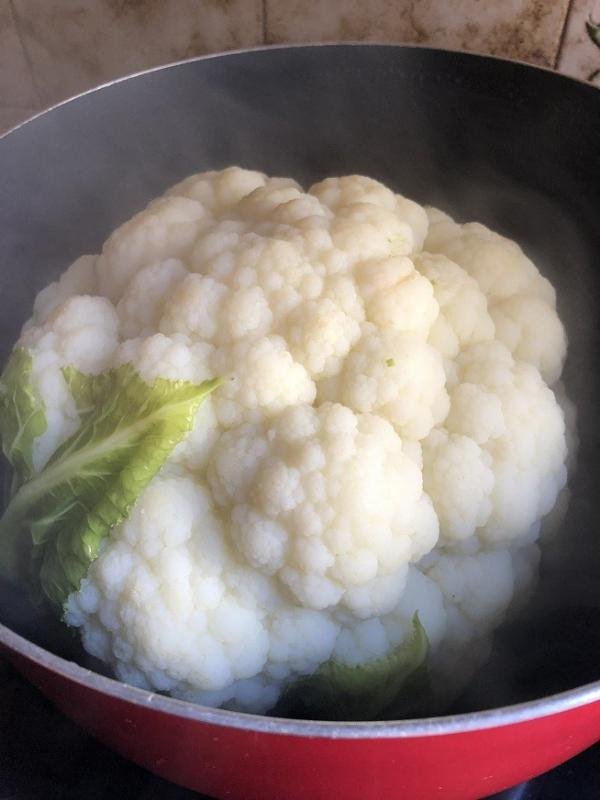
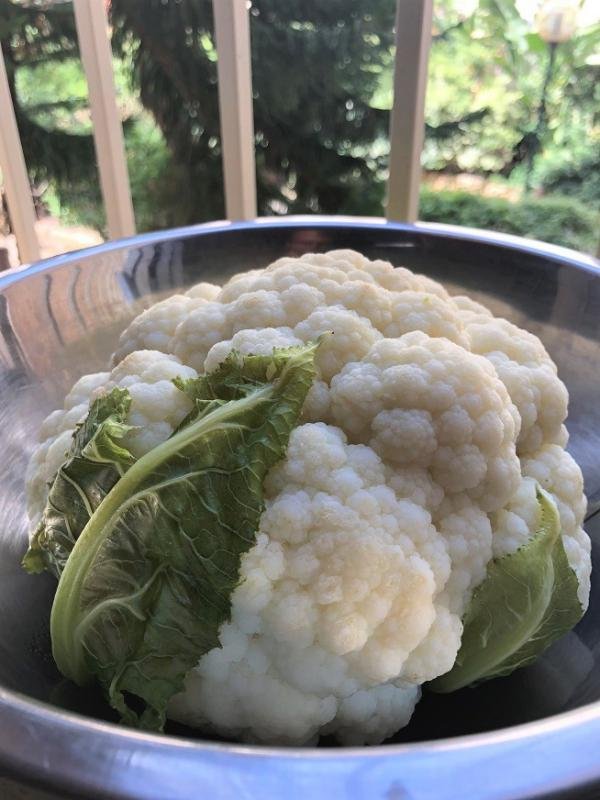
I cooked it first for a dinner with friends a couple of months ago. They all had the book and I wanted to surprise them with something new.
In two recipes in Cauliflower, it goes through a triple cooking process: It is first steamed, then fried and finally braised in a flavorful sauce. On page 78 the sauce is a sweet and sour Spanish pepper and garlic sauce, and on page 84 the it is a Moroccan style garlicy tomato sauce.
These two recipes made be understand that there is a method here that could be further explored: The browned fried coating allows the cauliflower to soak in flavors while giving it a unique, almost meaty texture.
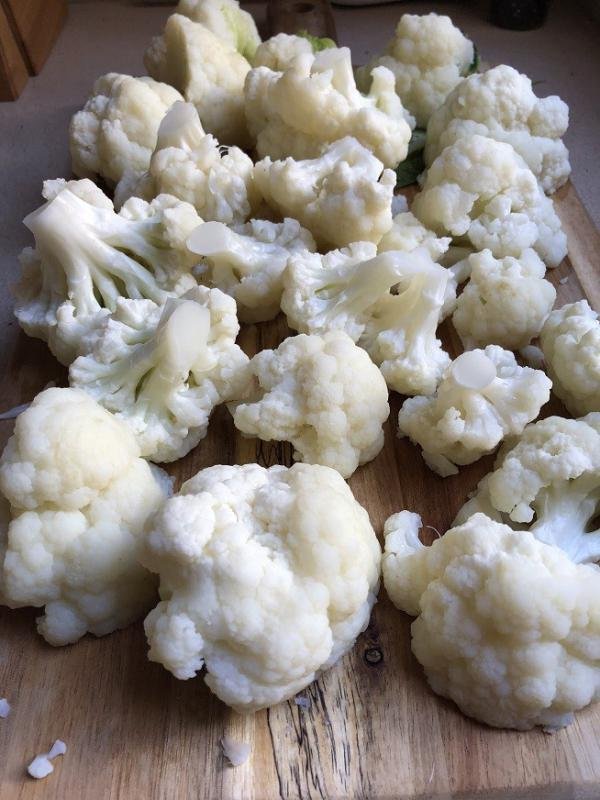
In other words, there is an entire word of sauces just waiting for you to braise some florets in them: from Thai and Indian curries to Greek and middle eastern yogurt and lemon sauces.
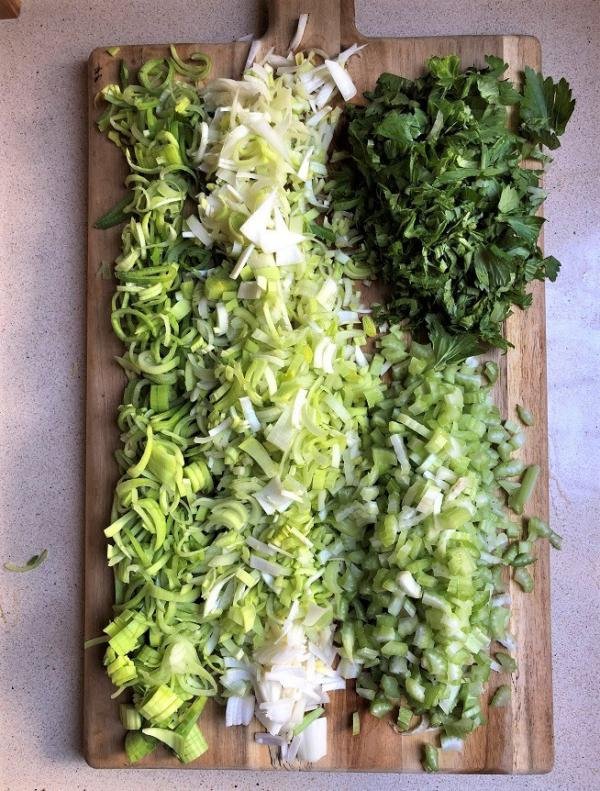
The sour one: hamoosta sauce
Traditionally reserved for meatballs or kubbeh/kibbeh/kubbah (depends on who you ask), hamoosta is the name of a northern Iraqi and Kurdish sauce, whose name literally translates to ‘sour’.
It is one of the most beloved sauces in Jerusalem for kubbeh (try the one served at Azura restaurant in Machane Yehuda market!), and typically consists of a number of vegetables and fresh herbs, turmeric for color, a bit of sugar and plenty of lemon juice to justify its name.
In my hamoosta I used leeks and celery, and other cooks add swiss chard, zucchinis, mint, garlic and even chickpeas to theirs.
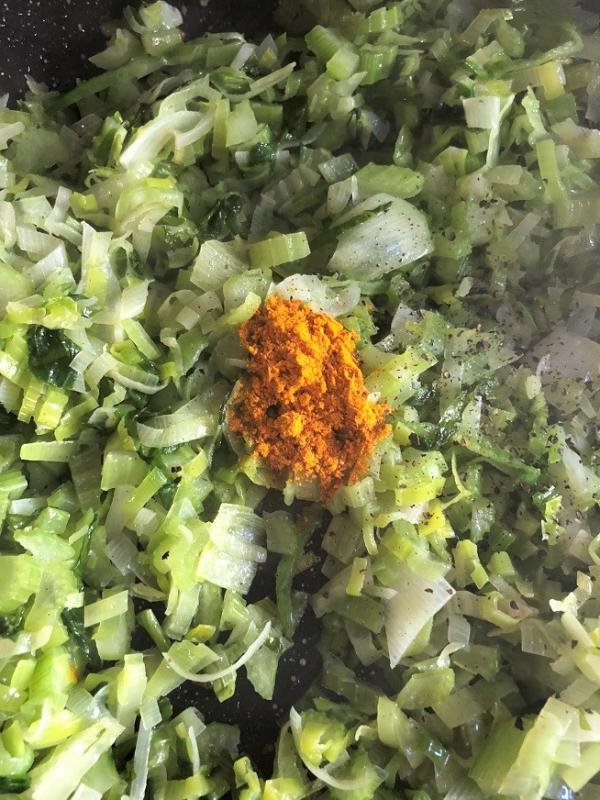
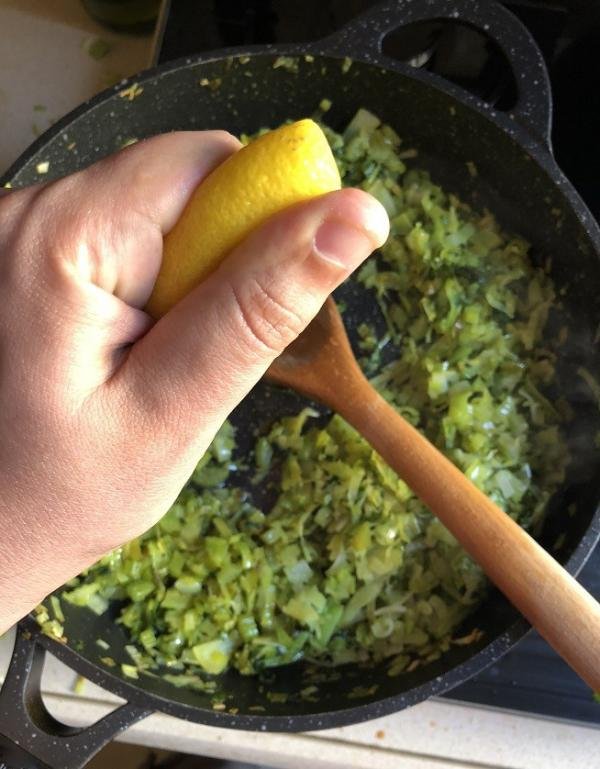
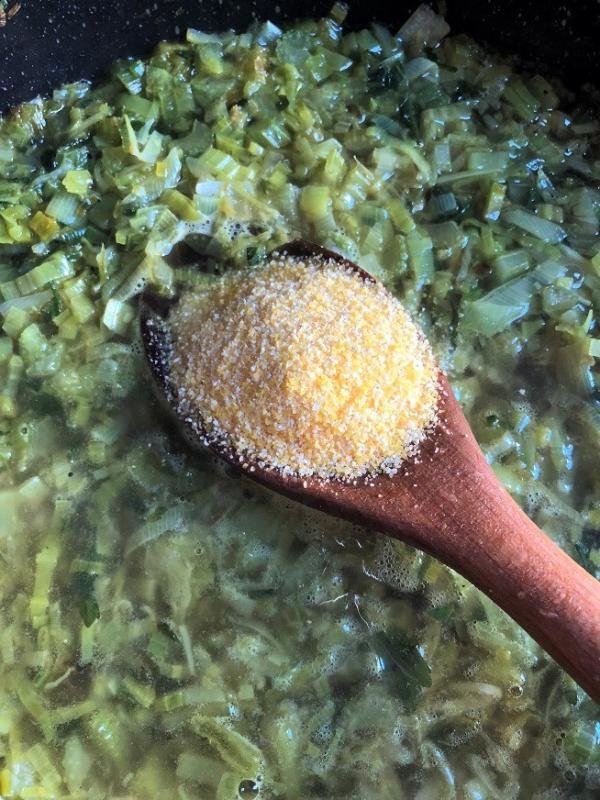
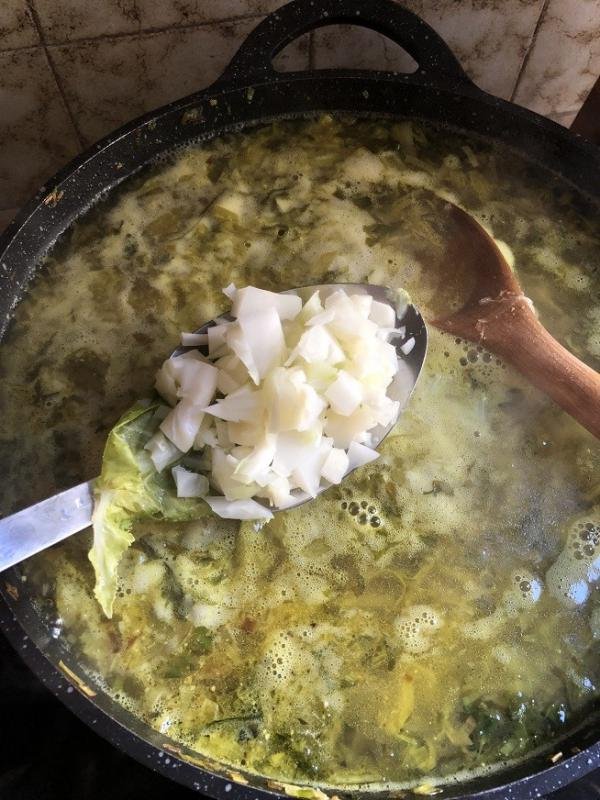
I used up all of the leeks and celery, chopping up both the celery leaves (that function as herbs) and the green part of the leek, that is unnecessarily discarded in many recipes. I also added some cornmeal / semolina to help thicken the sauce.
Whenever I make this and similar dishes, I like to start by steaming the cauliflower, meanwhile get the sauce going, then on the coating -> frying -> braising

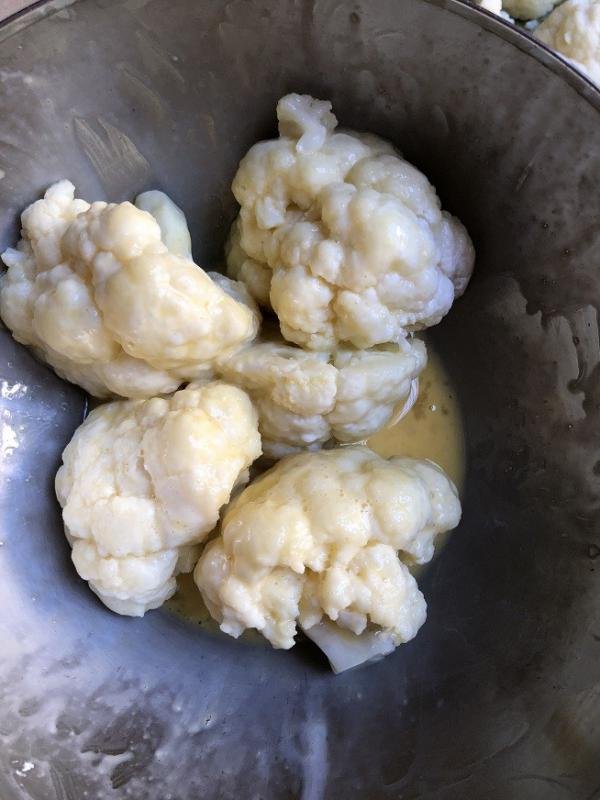
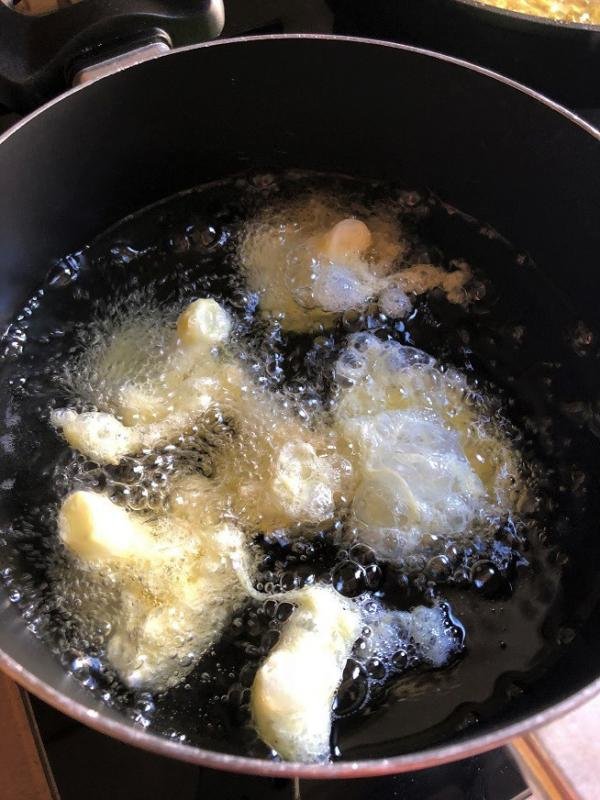
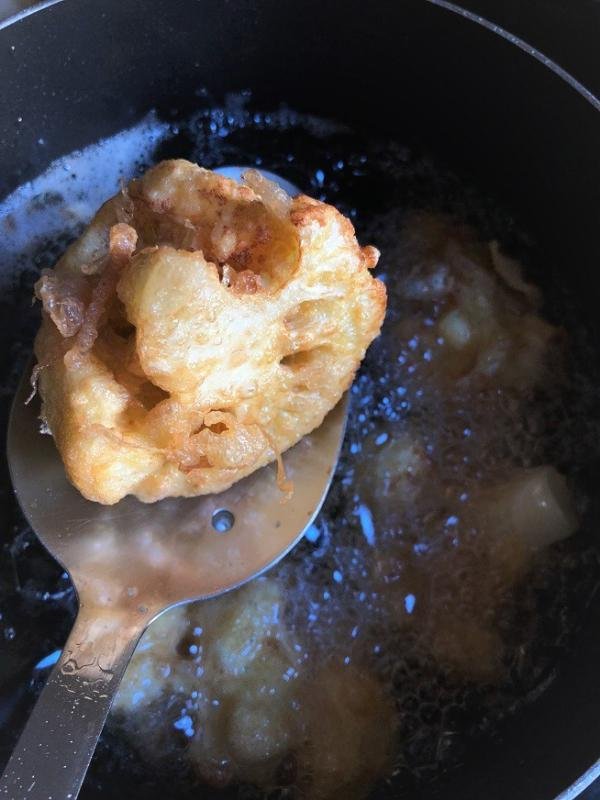
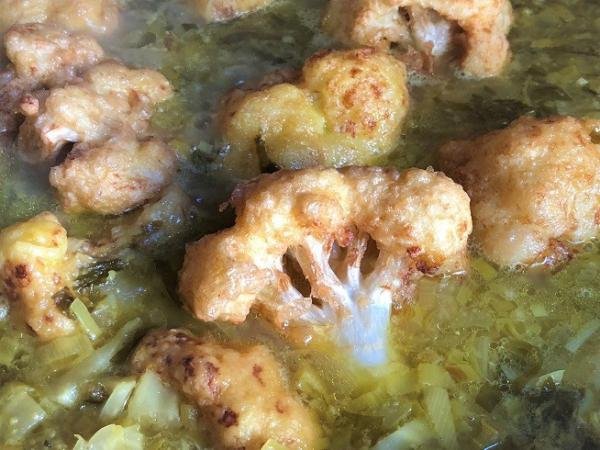
Why steam?
I have an affinity for steaming the cauliflower whole as the method for par-cooking it, but you can also blanch it in boiling water. The goal here is to soften the cauliflower just by a bit, so that the dry flour for the first stage of coating could stick to it.
You can use any fine flour you have at hand: AP, whole wheat, corn starch and even rice flour.
The second stage of the coating is a dip in some whisked eggs. The wet eggs adhere to the dry flour creating a light coating that browns well. This two-stage coating is common in Mediterranean and middle eastern cooking.
If you want this recipe vegan, any beer batter or pakora batter could replace the eggs (there are instructions in the recipe).
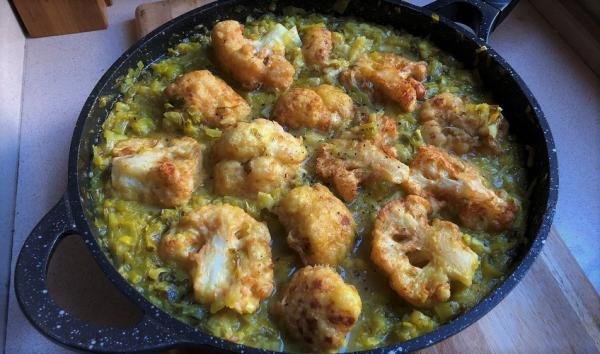
Before you ask:
- Can I bake? Yes! Lay the coated florets on a baking sheet lined with greaseproof paper, drizzle each floret with some oil and bake at 200 c (400 f, gas 6) for 15 minutes until golden.
- Can I use frozen florets? Yes! Frozen florets are per cooked, so once you defrost them you can move on directly to coating and frying.
- Can I freeze after cooking? Don’t know. Probably yes.
- Can I make this recipe gluten free and / or vegan?? Yes. The recipe explains how
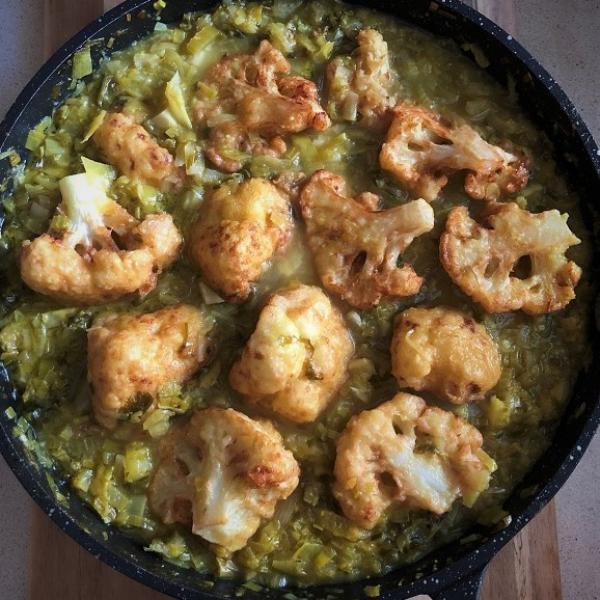
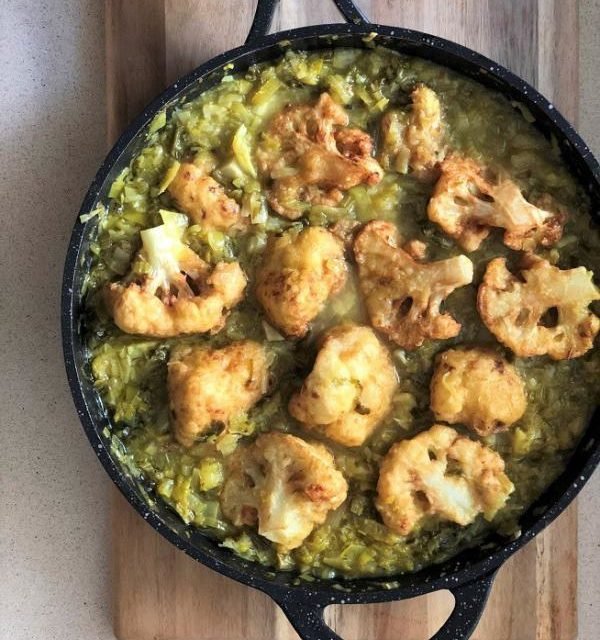
Hamoosta cauliflower: fried florets braised in a tangy leek sauce
contains eggs
Ingredients
For the cauliflower:
- 1 medium cauliflower
- Vegetable oil, for deep frying
For the coating:
- 1 cup cup all-purpose flour (GF flours like corn / rice flours also works)
- 2-3 medium eggs (preferably free ranged)
- 1/2 cup red lentil/chickpea flour mixed with 1/2 cup water to form a batter
- 1/2 teaspoon fine sea salt
For the sauce:
- 3-4 tablespoons olive oil
- 1 medium size leek (both green and white parts) well rinsed
- 3-4 celery stems (with the leaves)
- 3-4 tablespoons wheat semolina or polenta / fine grits (for GF version)
- 1/2 teaspoon ground turmeric
- 3-4 cups water
- 1/3 cup freshly squeezed lemon juice (or more to taste)
- kosher salt to taste
- 1 tablespoon brown sugar (or more to taste, whatever kind you have)
Instructions
For the cauliflower:
-
Steam the cauliflower whole for 7-9 minutes or until just tender and no longer pearly white in color.
-
Remove to a large bowl, allow to cool slightly then cut into medium size florets.
-
Alternatively, you can break the cauliflower down to medium size florets and cook them in simmering water 4-5 minutes, then drain to a colander.
For the sauce:
-
Finely chop the leeks and celery. If the cauliflower has nice stalks and stems, chop them up and add to the sauce too!
-
Heat the olive oil in a wide shallow pot.
-
Add the chopped leeks and celery and sweat over medium heat 6-5 minutes until lightly softened. Add the semolina/cornmeal, turmeric and water and bring to a boil.
-
Add the lemon juice and season with salt and sugar to taste. Simmer over low heat while working on the fried florets.
For the fried florets:
-
Heat oil for deep frying in a small pot. Crack the eggs to a bowl and whisk well, mix flour and salt in a bowl.
-
Coat the steamed florets with flour, then dip in the egg batter until evenly coated.
-
Fry in 2-3 batches for 3-4 minutes or until nicely golden. Remove to dry paper towel using tongs or a slotted spoon (you can also move the florets directly to the sauce).
Combine:
-
Add the fried florets to the simmering sauce.
-
Continue cooking over medium heat, uncovered, over medium-low heat for 15-25 minutes or until completely the florets are tender (but are not mushy) and the sauce liquid has thickened a bit.
-
Taste the sauce and adjust seasoning in necessary with salt or sugar more sugar (the sauce must be sour!)).
-
Serve warm or at room temperature, alongside couscous or rice.
-
Keeps refrigerated for 4-5 days (and tastes even better after a night in the fridge).

